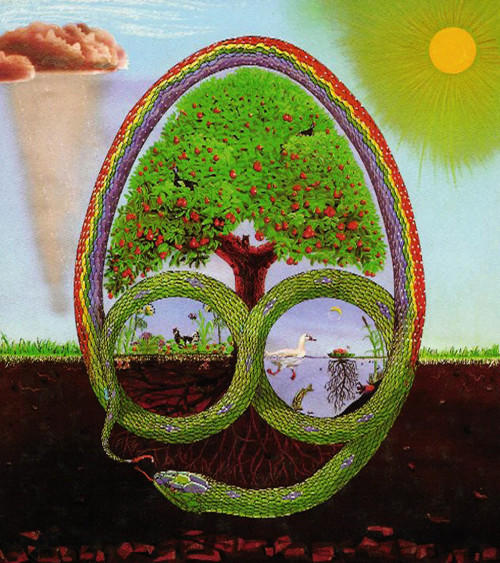Permaculture has been used to design buildings, energy and wastewater systems, villages, and even less tangible structures such as school curricula, businesses, community groups, and decision-making processes.
Permaculture uses a set of principles and practices to design sustainable human settlements. The word, a contraction of both “permanent culture” and “permanent agriculture,” was coined by two Australians. The first was Bill Mollison 1)↓, author of the dense and encyclopedic bible of the field, Permaculture: A Designer’s Manual. The other is David Holmgren 2)↓, who has brilliantly expanded permaculture’s scope.
Mollison says the original idea for permaculture came to him in 1959 when he was observing marsupials browsing in Tasmanian rain forests. Inspired and awed by the life-giving abundance and rich interconnectedness of this ecosystem, he jotted in his diary, “I believe that we could build systems that would function as well as this one does.” In the 1970s he and Holmgren, using what they had observed in nature and in indigenous cultures, began to identify the principles that made those systems so rich and sustainable. Their hope was to apply these principles to designing ecologically sound, productive landscapes. They reasoned that if life had been thriving on Earth for over three billion years, if indigenous peoples had been living relatively harmoniously in their environments for millennia, then life and indigenous cultures must have figured out some things about sustainability. David’s undergraduate thesis, which he and Bill revised and expanded, evolved into the groundbreaking book Permaculture One.
Permaculture is not a discipline in itself but rather a design approach based on connecting different disciplines, strategies, and techniques. It, like nature, uses and melds the best features of whatever is available to it.
Permaculture began, then, as a set of tools for designing landscapes that are modeled after nature, yet include humans, but Mollison, Holmgren, and those who came after them quickly realized that even if we learn to create farms, gardens, and landscapes that mimic nature, a sustainable land use that is embedded in an unsustainable society won’t prevent our tenure on this planet from being short, increasingly impoverished, or both. However, it turns out that permaculture’s principles—since they are grounded in nature’s wisdom—have breathtaking scope, far beyond permaculture’s origins in agriculture. Permaculture has been used to design buildings, energy and wastewater systems, villages, and even less tangible structures such as school curricula, businesses, community groups, and decision-making processes.
How does permaculture do this? Though on one level permaculture practitioners design with organisms, buildings, and those less tangibles that we refer to as invisible structures, they focus less on the objects themselves than on the careful design of relationships among them—interconnections—that will create a healthy, sustainable whole. These relationships are what turn a collection of unrelated parts into a functioning system, whether it’s a backyard, a community, or an ecosystem.
Permaculturists employ techniques from a broad range of disciplines, but these tools are selected and applied according to how well they allow permaculture’s principles to be applied…
If this still seems a mite theoretical, here is a more down-to-earth definition of permaculture. If we think of practices like organic gardening, recycling, natural building, renewable energy, and even consensus decision-making and social-justice efforts as tools for sustainability, then permaculture is the toolbox that helps us organize and decide when and how to use those tools. Permaculture is not a discipline in itself but rather a design approach based on connecting different disciplines, strategies, and techniques. It, like nature, uses and melds the best features of whatever is available to it. Some people new to this approach think of permaculture as a set of techniques. Although there are certain methods that are used often because they illustrate permaculture principles beautifully, such as herb spirals and keyhole beds, there are few, if any, techniques that belong only to permaculture. Permaculturists employ techniques from a broad range of disciplines, but these tools are selected and applied according to how well they allow permaculture’s principles to be applied, not because a prticular method is “how we do it in permaculture.”
Permaculture is a linking science.
In a culture that focuses on things rather than on relationships, permaculture’s emphasis on connections instead of “stuff” can make it tricky to explain. Some beginning permaculturists have annoyed advocates of various sustainable practices by saying “permaculture includes organic gardening (or solar energy, or natural building).” But rather than absorbing those disciplines or considering them as part of (and thus smaller than) it, permaculture shows us where and how to apply these important ideas. It is a linking science.
The aim of permaculture is to design ecologically sound, economically prosperous human communities. It is guided by a set of ethics: caring for Earth, caring for people, and reinvesting the surplus that this care will create…
Toby Hemenway from “Gaia’s Garden”
| 1. | ↑ | charismatic and iconoclastic one-time forester, schoolteacher, trapper, field naturalist |
| 2. | ↑ | one of the first of Bill’s many students |
